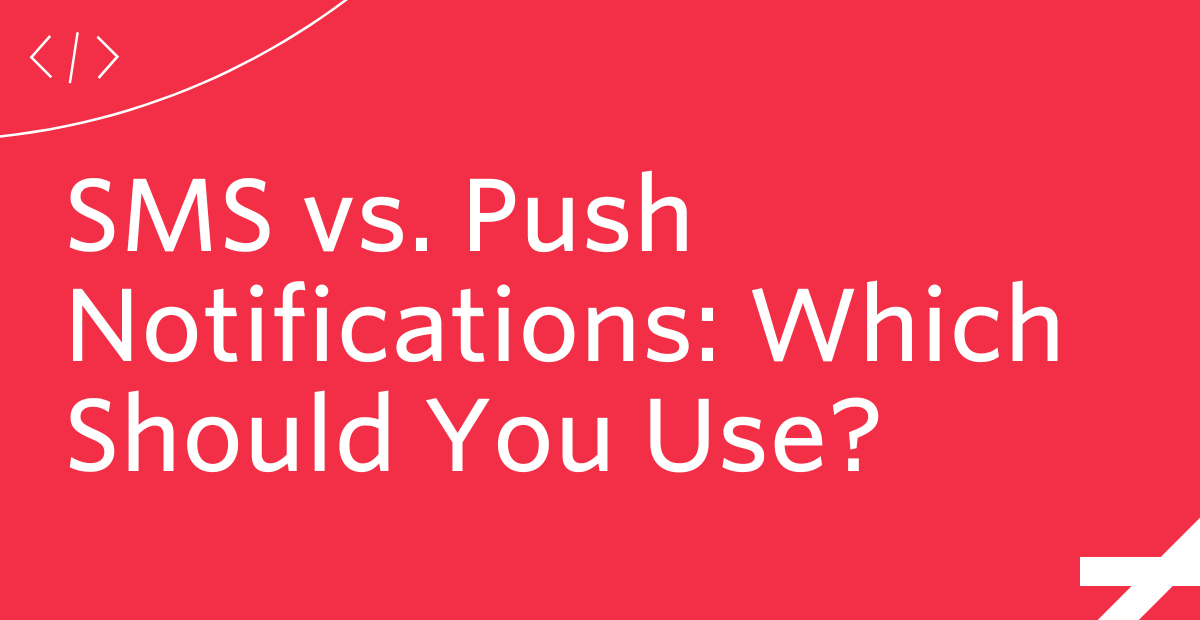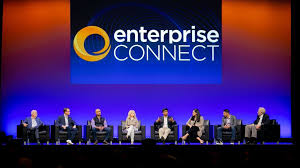SMS vs. Push Notifications: Which Should You Use?
Time to read: 4 minutes

Need to get a message to your customers quickly? SMS and push notifications are the way to go. An estimated 6.8 billion people use smartphones (around 89% of the global population), so you can bet your customers probably have a smartphone and check it regularly throughout the day.
While email is a tried-and-true form of communication, it's not as instantaneous as text or push notifications. Some customers might check their inbox frequently, but others might only do it a few times a day—the same isn’t true for the lock screen on a smartphone. Still, the average American checks their phone 96x per day (or once every 10–12 minutes).
If you want to guarantee your customers receive your message quickly and securely, SMS and push notifications are your best bet. But which should you use and when? Is it better to use SMS, push notifications, or a combination?
Good questions. We have answers.
Below, we'll break down the most common use cases for using each channel and explore use cases for using SMS and push notifications together.
SMS vs. push notifications: Core differences
SMS and push notifications share a lot in common. Each engages with customers on a mobile device with timely messaging, but how each goes about it differs. Here’s a look at the differences between SMS and push notifications.
| null | SMS | Push notifications |
|---|---|---|
| Opt in | Customers enter their phone number or text a short code to opt in to receive messages. | Customers download an app and confirm they’d like to receive push notifications. |
| Open rate | 98% open rate | 7.8% open rate |
| Visibility | SMS messages tend to stay at the top of mobile phones and are separate from the push notification stacks. | Push notifications can pop up as a banner, badge, announcement, and sound. These can appear within a list, individually, or stacked with other notifications. |
| Engagement | Users can read a text message, click links, or respond with a text. | Users click a push notification to get inside the application. |
| User preferences | Users have less control over their text message preferences and tend to only have the option of subscribing or unsubscribing. | Users have greater control over which messages they receive, how they receive them, and how the messages appear on their device. |
| Delivery method | Text messages are delivered over a cellular network to the mobile phone. | Push notifications are delivered from a downloaded app to the mobile phone. |
Keep in mind that the open rate numbers can be a little misleading. You can see and read a push notification without opening it—although opening it usually takes you within the app, regardless if that's what you want to do. On the other hand, with SMS messages, you typically need to open them to read the contents of the message, and users can simply read an opened text without taking further action.
When to use SMS
Whether SMS or push notifications are right for your message largely depends on your audience, industry, and product. However, here are a few use cases where it's generally best to use SMS:
- Urgent messages
- Travel alerts
- Delivery updates
- Confirmation messaging
- Appointment reminders
- Fraud alerts
- Marketing messages
In short, if time is of the essence, it's almost always better to send an SMS than a push notification.
Customers don't give out their phone numbers as easily as their email addresses—it's something they safeguard and limit. However, you'll find consumers are much more willing to download an app (especially a free one). In fact, the average person has 40 apps installed on their phone, and these apps can message the user on a whim if they've enabled notifications.
When to use push notifications
Push notifications might not be as timely as text messages, but these are still crucial in messaging customers. Here are a few times when it's usually best to send a push notification:
- Product updates
- New features
- Reminders
- Feedback requests
- User-designated triggers
- Sales and discounts
While push notifications aren't as urgent or visible as text messages, these still get eyeballs and opens. Less intrusive than SMS, users are more likely to opt in to this messaging channel.
Conversely, your text message campaigns need to be spot on (every time), or your customers will unsubscribe. The same isn't always true with push notifications. Users won't necessarily turn off all notifications if they find them unhelpful—instead, they might ignore them for a time or tailor their preferences within your app.
When to use SMS and push notifications
It's not always a debate about which channel is best for your message. Sometimes, it's best to use SMS and push notifications together—although not at the same time, of course. Used together, you can enhance your campaigns and ensure your audience sees the messages and have a chance to engage.
- Marketing campaigns: Need to send users periodic text and push notifications about a recent campaign, product launch, or sales happening? Text messages might send users back to your website's ecommerce store, but push notifications take them inside the app.
- Urgent messages: Need to contact a customer immediately for things like fraud, travel alerts, or canceled appointments? Send an SMS first, then follow it up with a push notification.
- Account information: Need your customer to update information like billing or shipping? Trigger them with a push notification first. If they don't take action soon, follow up with a text.
- Feedback requests: Need to request feedback for a product, service, or experience with a push notification? Follow up later with a text if they haven't responded.
- Confirmation: Need your customer to confirm an appointment? Let them do it in the app. If they don't respond soon, follow up with a text.
Send SMS and push notifications with Twilio
Whether you need SMS, push notifications, email, chat, or something else, Twilio has you covered. Sign up for a free account to try all our channels and build the messaging solution you've always wanted.
Related Posts
Related Resources
Twilio Docs
From APIs to SDKs to sample apps
API reference documentation, SDKs, helper libraries, quickstarts, and tutorials for your language and platform.
Resource Center
The latest ebooks, industry reports, and webinars
Learn from customer engagement experts to improve your own communication.
Ahoy
Twilio's developer community hub
Best practices, code samples, and inspiration to build communications and digital engagement experiences.


